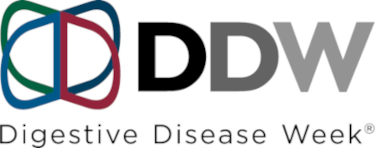Sp1203
VAGAL MECHANISMS IN THE CONTROL OF FOOD INTAKE & METABOLISM
Date
May 9, 2023
Explore related products in the following collection:
Tracks
Related Products
PLACEHOLDER
Perturbations in the gut mucosal immune response contributes to IBD. Non-immune cell popopulations including epithelial and stromal cells also play an important role in intestinal inflammation…
MONITORING OF CALPROTECTIN IN INFLAMMATORY BOWEL DISEASE USING A SWEAT BASED WEARABLE DEVICE
Switching from originator to biosimilar infliximab (IFX) is effective and safe. However, data on multiple switching are scarce. The Edinburgh IBD unit has undertaken three switch programmes: (1) Remicade to CT-P13 (2016), (2) CT-P13 to SB2 (2020), and (3) SB2 to CT-P13 (2021)…
ENCAPSULATED MICROBIOTA TRANSPLANT THERAPY IMPROVES PARTIAL MAYO SCORES IN ULCERATIVE COLITIS AND INDUCES RAPID ENGRAFTMENT COMPARED TO PLACEBO CONTROL
Switching from originator to biosimilar infliximab (IFX) is effective and safe. However, data on multiple switching are scarce. The Edinburgh IBD unit has undertaken three switch programmes: (1) Remicade to CT-P13 (2016), (2) CT-P13 to SB2 (2020), and (3) SB2 to CT-P13 (2021)…
A PHASE 2, RANDOMIZED, DOUBLE-BLIND, PLACEBO-CONTROLLED TRIAL OF PRA023 AS INDUCTION THERAPY IN PATIENTS WITH MODERATELY TO SEVERELY ACTIVE ULCERATIVE COLITIS: ARTEMIS-UC, COHORT 1
Switching from originator to biosimilar infliximab (IFX) is effective and safe. However, data on multiple switching are scarce. The Edinburgh IBD unit has undertaken three switch programmes: (1) Remicade to CT-P13 (2016), (2) CT-P13 to SB2 (2020), and (3) SB2 to CT-P13 (2021)…


